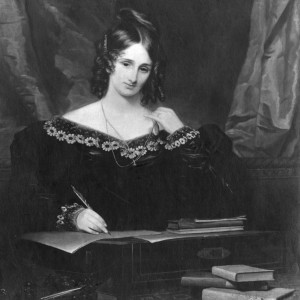
Mary Wollstonecraft Shelley, the British writer best known for ‘Frankenstein,’ and second wife of poet Percy Bysshe Shelley. PHOTO: HULTON ARCHIVE/GETTY IMAGES
Dreams have been the stuff of divine inspiration ever since Jacob, in the Book of Genesis, dreamed of a ladder that connected heaven and earth.
In the “Divine Comedy” (completed in 1320), Dante Alighieri wrote of the three dreams that beset him while traveling through Purgatory. In 1678, John Bunyan claimed that “The Pilgrim’s Progress” had come to him while sleeping: “I layed me down in the place to sleep: and as I slept, I dreamed a dream.”
The Romantics, because of their obsession with the sublime, were particularly sensitive to dreaming. The poet William Blake inhabited a twilight of visions and dreams. “O, what land,” he wrote, “is the land of Dreams?” It was a place so real and vivid to him that Blake claimed his method for relief etching—which he used to combine text and color images in “illuminated printing”—was the gift of his late younger brother, Robert, who explained it in a dream. Continue reading…





